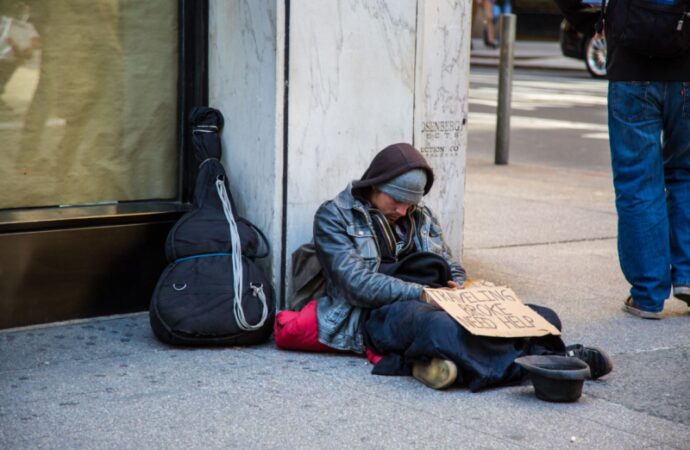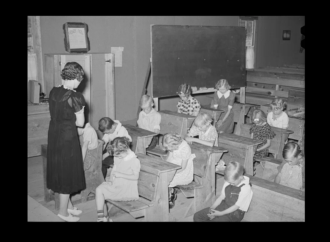In the negative sweepstakes of homelessness, New York City, Los Angeles, and Seattle are the big city winners. San Jose, CA, San Francisco, and San Diego are close behind.
How do we cure this scourge of homelessness affecting numerous large cities? Ascertaining the causes of homelessness is one of the ways to address it.
It’s tempting to conclude that cities with the best weather would be the most vulnerable to this problem, since homeless people tend to gravitate to warmer climes. Indeed, most cities inflicted with this problem do boast mild temperatures. But New York City is an outlier, for that city can be brutal in the winter. So we are left with a hint of the cause, but not a full explanation.
Another possibility comes from asking what these cities have in common in terms of local government. As all of them have Democratic mayors, it’s easy to conclude that pulling the lever for a different political party next time may be an obvious remedy to the homelessness problem.
But changing the government isn’t necessarily an immediate solution. The policies previous governments have put in place also need to be examined for their role in the homelessness issue.
Let it be established from the outset as a basic premise that the more residential buildings there are—particularly rental housing—the more likely we are to wrestle this homelessness challenge to the ground. The logical implication is that any government policy which reduces the number of housing units in a city is moving us in the wrong direction.
Rent control, then, becomes Exhibit A of what not to do, even though this seems paradoxical. Why paradoxical? Because rent control presumably lowers rents below a financial threshold too high for many to obtain housing. Making housing more affordable through rent control cannot but address the homeless problem, it is thought. But this is not true, for it violates our primordial principle: anything that lowers the quantity of housing will bite us in the rear in our quest to overcome the homeless problem.
Does rent control bring about more or less housing units? When put in this manner, the answer is clear. No, of course rent control produces fewer housing units, because it retards investment in this sector of the economy. Interestingly, more Democratic-run jurisdictions feature rent-control legislation than Republican-run jurisdictions do.
Housing units also become scarcer when the law treats various types of theft differently. What does theft have to do with it? If a criminal engages in carjacking the law very properly deals harshly with him. Ditto for fraud, bad check writing, pickpocketing, and other crimes.
Tenants who don’t pay their landlords also commit a type of theft, but if a tenant doesn’t pay his rent around Christmas, a judge is unlikely to evict the renter. Yet the landlord must continue to pay his mortgage. In effect, the law says there is something special about home and hearth. Such laws give people less of an incentive to invest in rental properties, thus leading to less available housing.
The issue of mental illness also accounts for a potentially significant percentage of the homeless. Years ago, there were mental institutions that would take the mentally afflicted off the street. Nowadays, thanks in part to the heroic efforts of psychiatrist Thomas Szasz, the same people who would be housed in such places are now living on the sidewalks of many of our cities.
What about public housing? The argument can be made that yet another significant cause of the homelessness problem is lack of public—or socialist—housing units, and that if more of them were built, the severity of the problem would be reduced.
It’s true, if the government throws enough money at a problem, inroads can sometimes be made. However, the example of Pruitt-Igoe puts paid to this argument.
Pruitt-Igoe was a gigantic public housing project in St. Louis, a dangerous place with rampant crime. It was such a disaster that the authorities themselves felt compelled to destroy it.
Journalist Jane Jacobs gets credit for helping us understand why public housing initiatives such as Pruitt-Igoe will not work. Simply put, there were no “eyes on the street” promoting safety. Why not? One reason is because those responsible for Pruitt-Igoe eliminated commerce from their buildings; there were no stores on the ground floors of these buildings with people walking in and out of them to observe potential criminals.
Furthermore, Pruitt-Igoe catered to lower income individuals and encouraged fatherless homes by not allowing women on welfare to have a man in their homes. The result was mainly single parent households unable to contend with hordes of fatherless teenaged boys.
In essence, if we want to cure homelessness, then getting the government out of the picture will help a lot.
—
Image Credit: PublicDomainPictures.net
3 comments















3 Comments
Teri Pittman
October 4, 2022, 11:17 pmI watch news videos on the homeless problem in Portland OR. I have a property across the river that is full of squatters. I am four months into the legal process of arresting them so the property can be cleaned. Code Enforcement does not seem to be happy with how long it is taking.
What concerns me are the commenters insisting that anyone should be able to just take over a property. They don’t understand this impacts rentals, as people will not rent a property if they can’t cover property taxes. They don’t understand the county can take your property if you don’t pay the taxes. They say we should have compassion. Where is the compassion for the owner stuck with legal and cleanup bills? There was ni compassion for me when they stuck me with an $1100 electric bill that I had to pay. I have no compassion for them now. It’s theft.
REPLYRonald Banner@Teri Pittman
October 5, 2022, 11:43 amFinding housing for the homeless is not the problem or the answer. Creating appropriate laws to get the homeless off the street by use of treatment facilities, technical training, and appropriate determination of the ability to rehabilitate the homeless needs to be done before housing is found for them; otherwise they will end up back on the street. Many homeless will need ongoing support services to maintian themselves in any kind of housing, but some with appropriate caseworker support may be able to maintain themselves out in the community.
REPLYKen
October 5, 2022, 7:21 pmWhen we lived in Omaha NE (i.e. 1991 to 1996) our local church and my family worked with and supported a homeless shelter. Back then (and probably still true) the homeless fell into about 3 equal groups.
REPLY1) Addicts (drugs and or alcohol)
2) Mentally Challenged
3) Run-aways
The only group we could really help (i.e. find shelter and jobs) were the runaways. For the other two groups, homelessness was a symptom and not the root cause. My heart went out to the mentally challenged, but we could not keep them in the shelter against their will